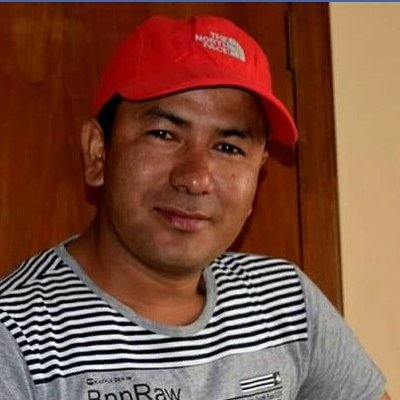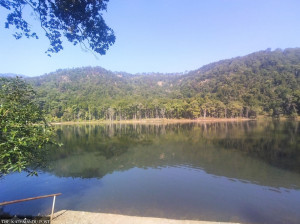Sudurpaschim Province
SEE aspirants are choosing tuition centres over schools
Over 500 Bajhangi students are now in Chainpur, enrolled at various tuition centres, after deserting their schools.
Basant Pratap Singh
Mahesh BK, a grade 10 student at Daulichaur Secondary School in ward 1 of Surma Rural Municipality, enrolled at a tuition centre in Chainpur, the district headquarters of Bajhang, three months ago. He has been preparing for the Secondary Education Examination to be held in March.
Out of the 45 students in grade 10 at Daulichaur Secondary School, 39 are currently in Chainpur taking private lessons at various tuition centres.
Meanwhile, classes for grade 10 have been terminated in the school back in the village for a lack of students in the classroom.
Shivraj Joshi, principal of Daulichaur Secondary, said the school has not run classes for grade 10 since November after a majority of students left for tuition centres in Chainpur.
“We were forced to stop classes as almost the entire class stopped attending. Parents prefer sending them to tuition centres because they think their children will do better in their board examination,” said Joshi. “The school offers free education but students aren’t willing to stay to prepare for SEE.”
Mahesh, who is taking private lessons in Mathematics, Science and English, pays Rs4,000 per subject to the tuition centre. He also pays Rs2,500 a month for a room he has rented near his tuition centre.
However, not everybody in the village can afford to send their wards to these tuition centres. The students whose parents haven’t been able to send them to Chainpur have also buckled under peer pressure and have refused to attend classes in the school to prepare for SEE.
“There are seven grade 10 students who are still in the village and we have been asking them to come to school but they have refused,” Joshi said. “They want their parents to send them to Chainpur to join private tuitions.”
Mahesh’s father, Bhupendra BK, said that parents like him are sending their wards to tuition centres in the hope of good SEE grades.
BK said he has been spending around Rs10,000–Rs15,000 a month on Mahesh’s stay and education in Chainpur. “I will continue to support him as I have seen students who go to these tuition centres do better in their board exams than those who don’t,” he said. “The teachers at the school also provide good lessons but the results of students who attend tuition centres in Chainpur are always better.”
There are five secondary-level schools in the Surma Rural Municipality. More than 160 students have filled out forms for the coming SEE exam.
Surma Secondary School in ward 4 has the highest number of grade 10 students, but the number attending classes at school is quite low.
According to Dev Bahadur Pujara, principal of Surma Secondary School, 72 students are enrolled in grade 10 at the school, but only 15 to 20 students attend classes regularly. Most students have gone to Chainpur and are enrolled in tuition centres.
Grade 10 students start leaving the school for Chainpur after filling out the SEE forms in September and October, Pujara said, adding a student spends over Rs10,000 a month in tuition, rent, and food in Chainpur. “Even though we provide the same education, they refuse to attend classes at the school,” he said.
Chainpur is currently teeming with grade 10 students from Saipal, Surma, Talkot and Mashta rural municipalities preparing for SEE. The overcrowding has led to a shortage of rentals. The tuition centres are also overcrowded with at least 70 to 80 students being packed in one classroom.
More than 500 students are currently in Chainpur studying English, Mathematics, Science, Optional Mathematics and Economics at various tuition centres.
According to the data of the Education Development and Coordination Unit in Bajhang, a total of 4,500 students from 88 secondary schools are preparing to appear in the SEE scheduled for March 28 to April 9 this year.
“Some schools are yet to complete the SEE course. The schools should run extra classes rather than terminate grade 10 classes,” said Basant Bahadur Singh, information officer of the unit. “Students from impoverished communities who cannot afford to go to Chainpur are the ones who will be left unprepared for SEE. The respective local units and school administrations should take this issue seriously and ensure that every child gets to prepare for their board exam.”
The Constitution of Nepal ensures free of cost education up to the secondary level as a fundamental right. Article 31 of the statute states every citizen shall have the right of access to basic education. Every citizen shall have the right to get compulsory and free education up to the basic level and free education up to the secondary level from the state. Citizens with disabilities and indigent citizens shall have the right to free higher education under the law. Similarly, visually impaired citizens shall have the right to free education through braille script and those with hearing or speaking impairments must get free education through alternative teaching and learning methods such as using sign language.
Schedule 8 of the constitution has the provision wherein managing basic and secondary education falls under the jurisdiction of the local level. Similarly, the Local Government Operation Act 2017 delegates authorities to the local government to manage physical and educational infrastructures, formulate and implement rules regarding secondary education, and monitor and regulate the educational institutions to ensure free-of-cost education to the students.
Khadak Bohara, chairman of Surma Rural Municipality, said he would immediately inquire about school closures and take action when questioned about the local unit’s role in abiding by constitutional and legal provisions through the community schools.
“I will instruct the school headmasters to run classes for the SEE students. This is a serious issue,” Bohara said. “We will raise it in the rural municipality’s meeting as well.” He said the District Coordination Committee should also take initiatives to resolve the problem.
Some local bodies in Bajhang claim that they attempted to stop the SEE students from taking tuition classes outside the schools but to no avail. “It has become fashionable to go to Chainpur and take tuitions,” said Harindra Upadhyay, education unit chief of Talkot Rural Municipality. “When we tried to run classes in the schools the students left in the villages refused to come.”
According to the ninth amendment of Education Regulation 2002, students of community and institutional schools must have at least 75 percent attendance in grade 10 to be eligible to appear in the SEE. The school administration, however, disregards the required attendance for students.
Educationists warn that such practices could cause damage not just to students but the entire society. “The schools may give students with low attendance leeway but it will only weaken the public education system,” said Laxman Upadhyay, a teacher at Satyawadi Secondary School, the district’s first school.
“Students appearing for SEE must be encouraged to attend the entire academic session instead of going on a three-month break to enrol at tuition centres. This way, the schools can also complete the syllabus and not a single student will be left out.”




 12.12°C Kathmandu
12.12°C Kathmandu












